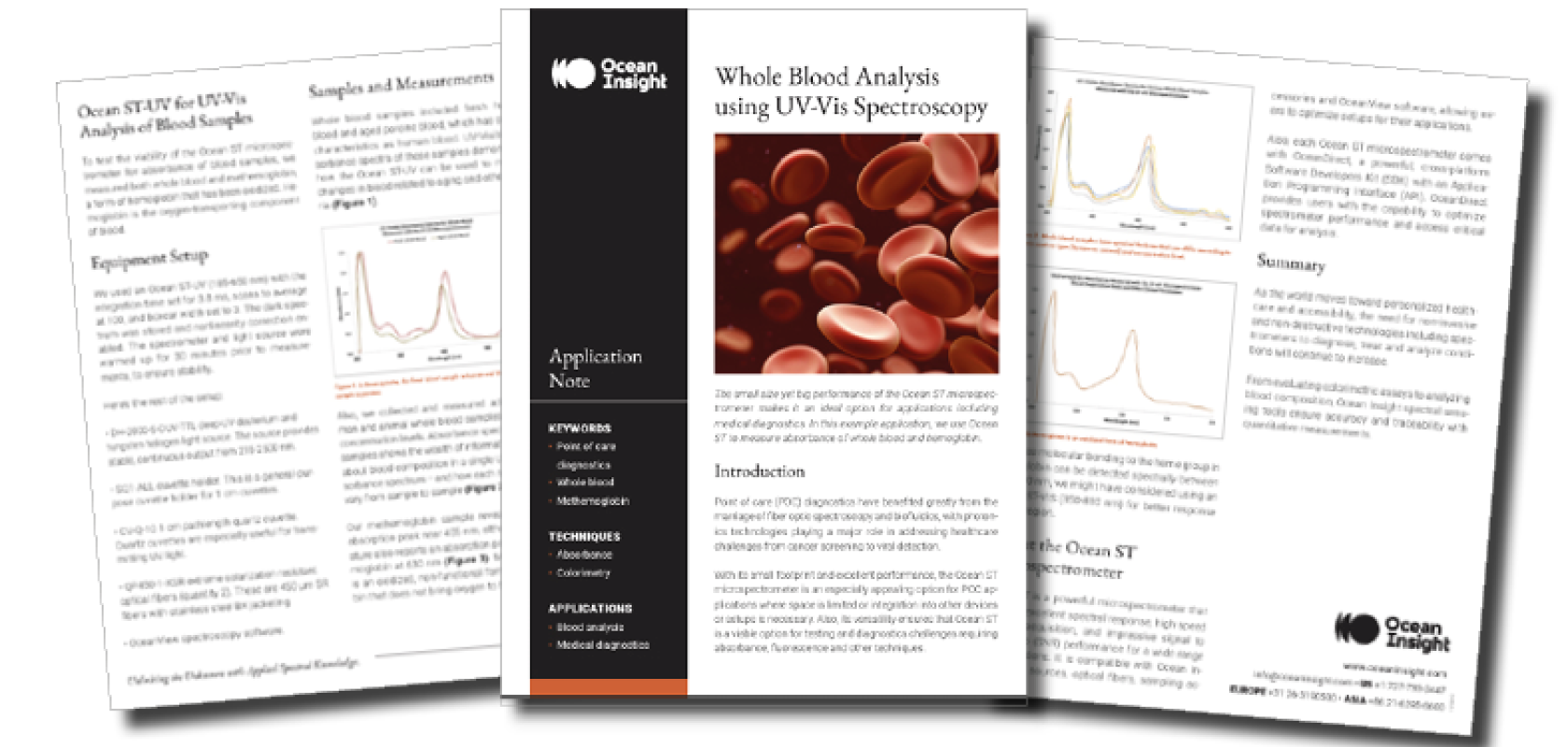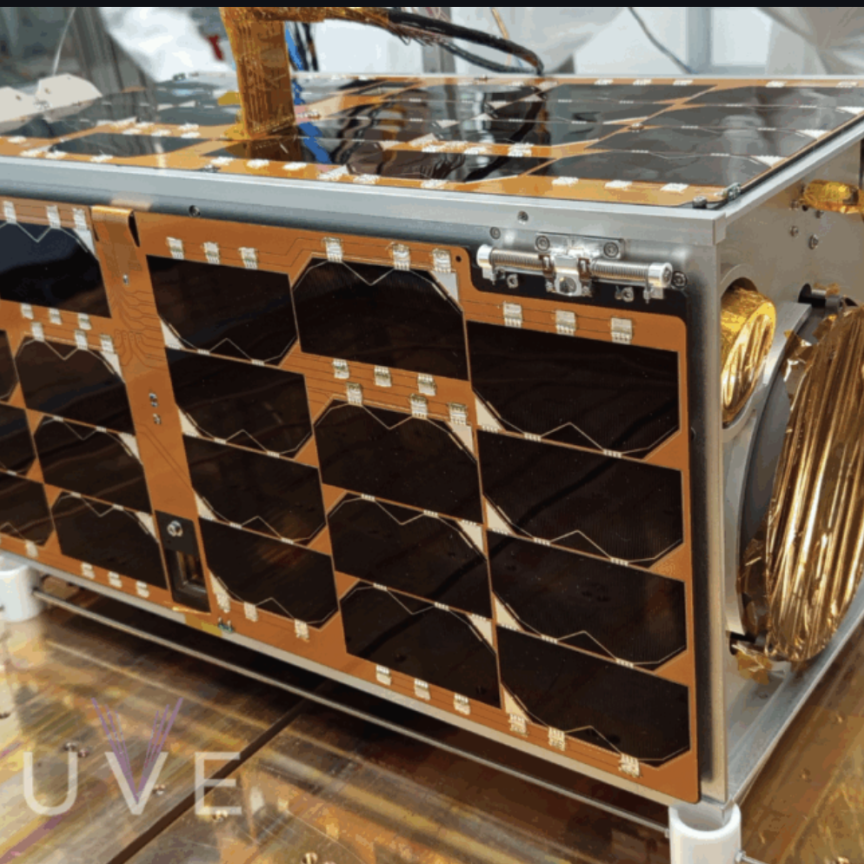How UV-visible spectroscopy can boost blood analysis in point-of-care diagnostics

In this application note, Ocean Insight tests its Ocean ST microspectrometer for absorbance of blood samples. The Ocean ST is designed to provide excellent spectral response, high-speed spectral acquisition, and impressive signal to noise ratio (SNR) performance for a wide range of applications.
In the realm of point-of-care (POC) diagnostics, the fusion of fibre optic spectroscopy and biofluidics has revolutionised healthcare. Photonics technologies have played a pivotal role in addressing challenges from cancer screening to viral detection. The Ocean ST microspectrometer stands out in this landscape, says Ocean Insight, offering exceptional performance within a compact design. Its versatility makes it an ideal choice for absorbance, fluorescence, and various other techniques crucial in testing and diagnostics.
What this application note covers:
- Analysing the composition of blood samples from humans and pigs
- Evaluating the use of the Ocean ST microspectrometer in point-of-care diagnostic settings
- Configuring a modular spectroscopy system for absorbance measurements
Using Ocean ST-UV for blood sample analysis
Ocean Insight’s study delved into the Ocean ST microspectrometer's capacity for absorbance measurements in blood samples, evaluating both whole blood and methemoglobin. The equipment setup involved meticulous calibration and warm-up to ensure stable and precise readings.
Its experiments included fresh human blood and aged porcine blood, showcasing the Ocean ST-UV's ability to monitor changes related to ageing and other criteria. Additionally, varying concentrations of human and animal blood samples demonstrated the diverse information obtainable from a single UV-visible absorbance spectrum.
Insights from methaemoglobin analysis
Analysing methaemoglobin revealed distinctive absorption peaks, signifying its non-functional nature in oxygen transportation. This demonstrates the Ocean ST microspectrometer's efficacy in identifying and characterising molecular compositions within blood samples.
Optimising spectral detection in haemoglobin analysis
Considering spectral detection between 500-600 nm, using the Ocean ST-VIS (350-810 nm) could enhance response in that region, providing a comprehensive analysis of the heme group in haemoglobin.
Conclusion
In an era focused on personalised healthcare and accessibility, the demand for non-invasive and precise technologies such as spectrometers for diagnosis and analysis continues to grow. Ocean Insight's spectral sensing tools, including the Ocean ST microspectrometer, promise accuracy and traceability in quantitative measurements, making significant strides in advancing medical diagnostics.

